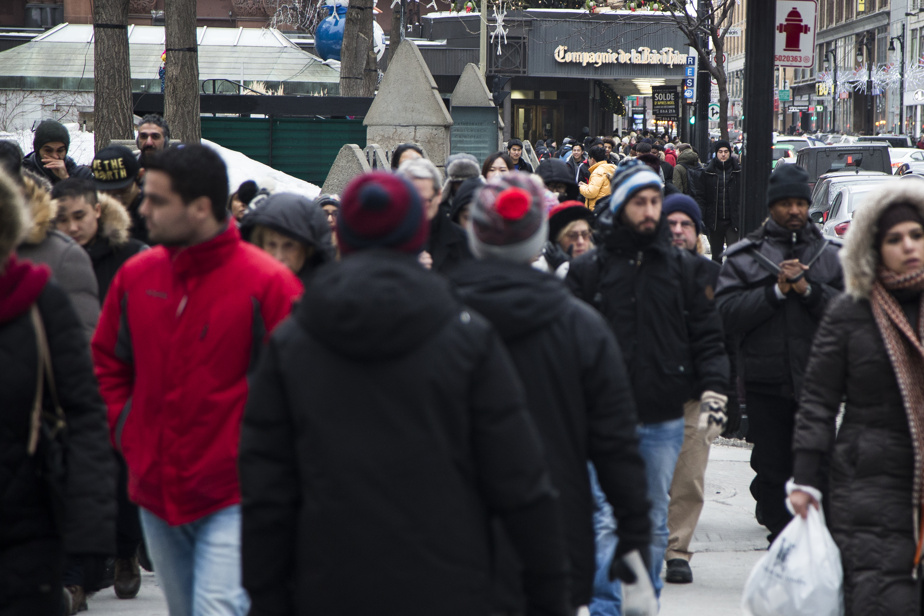The resumption of post-pandemic international immigration would have caused Montreal’s population to jump by an impressive 5.3% in just one year, according to an estimate from the Institut de la tourisme du Québec (ISQ).
With an increase of nearly 100,000 inhabitants, the metropolis has grown more quickly than all the other large cities in the province, including its suburbs.
During the pandemic, Montreal’s losses to the regions were no longer offset by international arrivals, so “there were years of very low growth and even a year of demographic decline,” explained Martine St-Amour, demographer at the ISQ, in telephone interview.
But once the borders reopened, “there was very significant demographic growth across Quebec, and it was growth that was driven by international immigration,” continued Ms.me St-Amour. And we know that, generally, Montreal accounts for a large proportion of migratory gains. »
This data should include everyone in the territory (including temporary workers, whose numbers have recently exploded), with the exception of tourists.
The Montreal mayor’s office did not wish to comment on this information.
Winners and losers
With colleagues, Mme St-Amour recently produced a population estimate for each municipality in Quebec, as of 1er July 2023. This was made without fanfare just after Christmas in the form of a “population decree” from the Quebec government. These data will be used in particular to calculate municipal subsidies.
It is by comparing the 2024 population decree to the 2023 decree that we obtain an increase of 5.3% in the population of the city of Montreal and 5% for the island of Montreal. The ISQ indicates that such comparisons can raise methodological problems, but confirms that the data used for the decrees each time correspond to its “best estimate” of the population of each municipality. In addition to censuses, ISQ demographers have access to various government databases (health insurance, for example).
According to the compilation of The Press, Quebec municipalities with more than 100,000 inhabitants saw their population increase by 3.5% on average.

In the metropolitan region, Vaudreuil-Dorion and Brossard exceed this average, while Laval and Longueuil are below. Some towns in the West Island have even seen their population decrease in the last year. This would be particularly the case for Baie-d’Urfé (-4.6%), Beaconsfield (-2.4%) and Montreal West (-2.56%).
Without commenting on these particular cases, Mme St-Amour indicated that the municipalities which lose inhabitants are often “the oldest regions, where deaths will be more numerous than births”, or those which undergo exile.
Municipalities with between 10,000 and 100,000 inhabitants only saw their population increase by 0.7% between 2022 and 2023, again according to the decree.
Radio-Canada reported that mayors of municipalities far from major centers had expressed reservations about these estimates: the very small village of Schefferville would have seen its population almost double, without much impact on the ground. Gaspé would have lost around a hundred inhabitants, but not enough to bring it below the 15,000 mark, which opens the door to a whole range of subsidies.
+14% downtown
The ISQ experts even looked at the evolution of the population in the different boroughs of Montreal.
According to their estimate, the heart of Montreal (borough of Ville-Marie) would have gained 14% in population between 2022 and 2023: 117,823 lived there on 1er July 2023, compared to 103,017 a year earlier, according to the decree. Côte-des-Neiges–Notre-Dame-de-Grâce and Montréal-Nord would also have experienced particularly significant growth.
Martine St-Amour pointed out that next May the ISQ will publish its official estimates of the Quebec population. “We can expect a demographic recovery and good growth in Montreal. But we will have the full measure next May,” she said.
